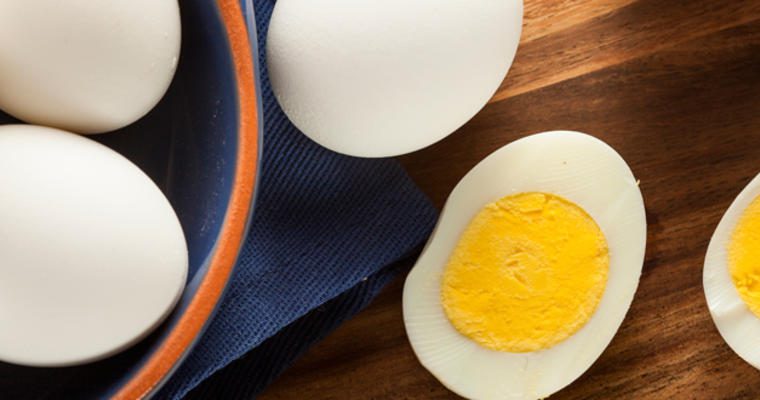With the implementation of USDA’s Smart Snacks in School nutrition standards, many schools are finding some favorite snack foods challenging to serve. Here are some options that demonstrate ways to serve challenging foods and beverages while still meeting nutrition rules.
How to Serve Challenging Food and Beverages in Schools
Eggs
Eggs are naturally high in fat. In fact, of the calories in an egg, about 60 percent of them are from fat. In order to meet Smart Snacks requirements, items must contain ≤ 35% calories from fat, meaning that eggs can be difficult to menu. But, don’t fear! There are still some ways you can serve them à la carte:
- Menu eggs as an entrée at breakfast twice a week; this will qualify them to be exempt from Smart Snacks standards the rest of the day and the following day (for both breakfast and lunch).
- Serve eggs with a slice of whole-grain bread, allowing the combination to qualify as either a snack or entrée, depending on the nutritional content of the bread.
Coffee & Other Hot Beverages
Caffeinated beverages, such as coffee, are only allowed in high schools, regardless of whether the beverage is brewed in a pot or dispensed from a hot beverage machine. To meet Smart Snacks standards, drinks must stay within calorie and portion-size restrictions:
- Calorie-free beverages—up to 20 fl. oz. serving.
- < 5 calories per 8 fl. oz. or ≤ 10 calories per 20 fl. oz.
- Plain coffee would fit into this category.
- Lower-calorie beverages—up to 12 fl. oz. serving.
- ≤ 40 calories per 8 fl. oz. or ≤ 60 calories per 12 fl. oz.
- Milk, cream, and sweeteners may be added to coffee and other drinks, but the beverage must stay within the above calorie guidelines.
- Espresso combined with steamed/boiled (1% or skim) milk, and/or ice is allowed, but if any flavoring is added, the beverage must meet calorie guidelines.
Smoothies
Smoothies may be sold as a food or beverage, depending on the ingredients used to make the smoothie.
Beverage
When the smoothie contains only approved beverages (100% juice, fat-free or low-fat milk, water, or ice) it would automatically meet standards, but it must stay within portion requirements—up to 8 fl. oz. for elementary schools, and up to 12 fl. oz. for middle schools and high schools.
If the smoothie contains added sweeteners or other ingredients, it must meet the “lower-calorie” beverage standards (≤ 40 calories per 8 fl. oz. or ≤ 60 calories per 12 fl. oz.) and can only be served in high schools.
Food
If the smoothie contains one of the main food group categories as the first ingredient, and meets the specific nutrient standards, it can count as a food.
- Entrée: If the smoothie contains a meat alternate (yogurt, peanut butter) and a fruit or vegetable, it meets the definition of an entrée item and may be sold as such.
- Snack: If the smoothie does not contain a meat alternate, then it would not qualify as an entrée. However, if it meets the general and nutrient standards for snacks, it may be sold as such.
If a smoothie is served as a breakfast entrée in the School Breakfast Program, it is exempt from Smart Snacks standards and may be sold à la carte the day of and day after service.
Peanut Butter/Cheese
Peanut butter and cheese are naturally high in fat, however they are exempt from fat limits when sold alone. When combined with other items (bread, crackers, fruit, or vegetables) they would have to meet additional standards.
- With bread—Peanut butter or cheese combined with whole-grain bread would be considered an entrée. All entrée items must meet Smart Snacks general and nutrient standards unless served as part of the National School Lunch Program, in which case they could be sold à la carte the day of and day after service.
- With fruit/vegetables—These snacks qualify as “paired exemptions” and are only required to meet calorie and sodium requirements (do not have to meet fat, saturated fat, or sugar standards).
- With crackers—Must meet one of the general standards and all nutrient standards in order to be sold.











